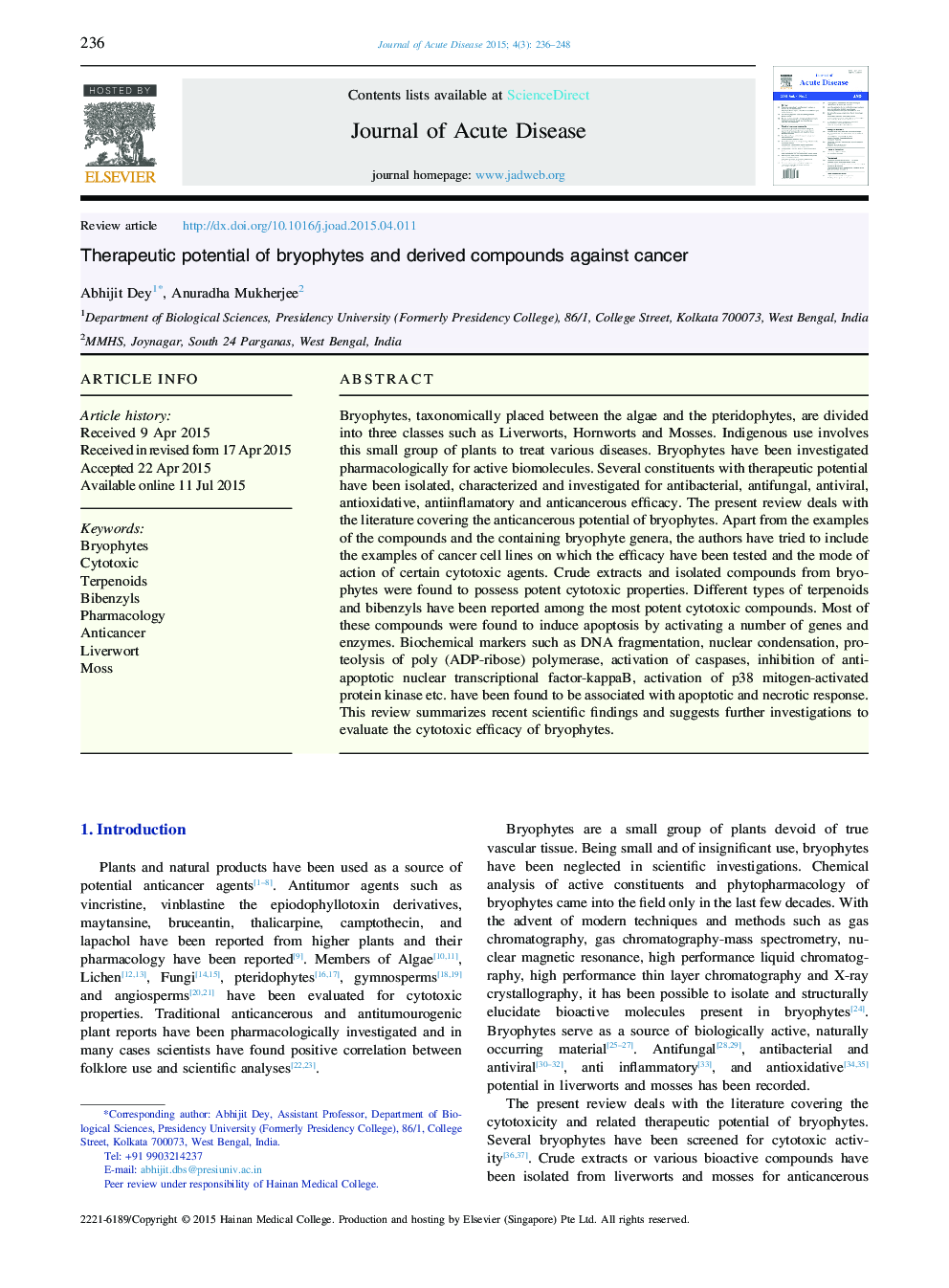| Article ID | Journal | Published Year | Pages | File Type |
|---|---|---|---|---|
| 3475190 | Journal of Acute Disease | 2015 | 13 Pages |
Bryophytes, taxonomically placed between the algae and the pteridophytes, are divided into three classes such as Liverworts, Hornworts and Mosses. Indigenous use involves this small group of plants to treat various diseases. Bryophytes have been investigated pharmacologically for active biomolecules. Several constituents with therapeutic potential have been isolated, characterized and investigated for antibacterial, antifungal, antiviral, antioxidative, antiinflamatory and anticancerous efficacy. The present review deals with the literature covering the anticancerous potential of bryophytes. Apart from the examples of the compounds and the containing bryophyte genera, the authors have tried to include the examples of cancer cell lines on which the efficacy have been tested and the mode of action of certain cytotoxic agents. Crude extracts and isolated compounds from bryophytes were found to possess potent cytotoxic properties. Different types of terpenoids and bibenzyls have been reported among the most potent cytotoxic compounds. Most of these compounds were found to induce apoptosis by activating a number of genes and enzymes. Biochemical markers such as DNA fragmentation, nuclear condensation, proteolysis of poly (ADP-ribose) polymerase, activation of caspases, inhibition of antiapoptotic nuclear transcriptional factor-kappaB, activation of p38 mitogen-activated protein kinase etc. have been found to be associated with apoptotic and necrotic response. This review summarizes recent scientific findings and suggests further investigations to evaluate the cytotoxic efficacy of bryophytes.
